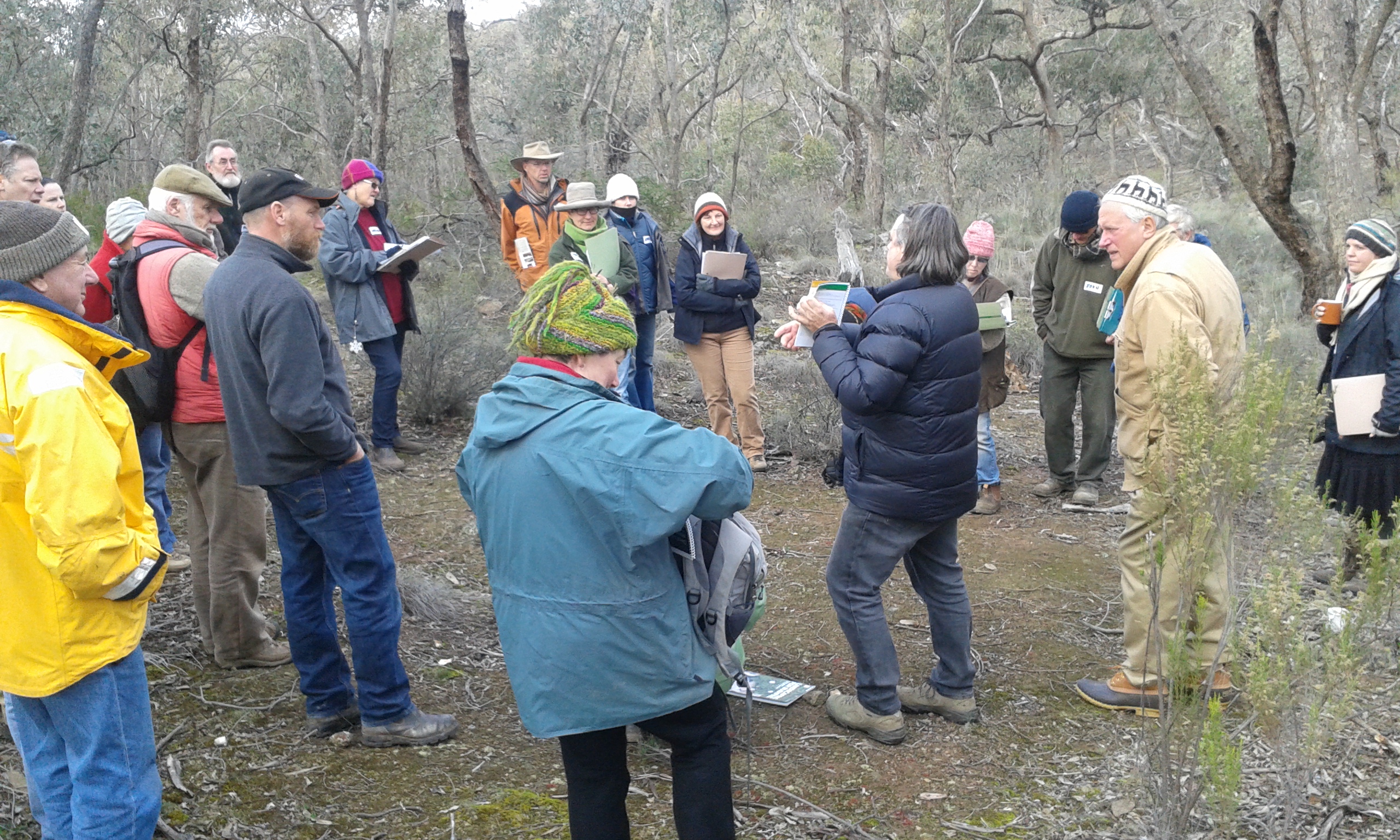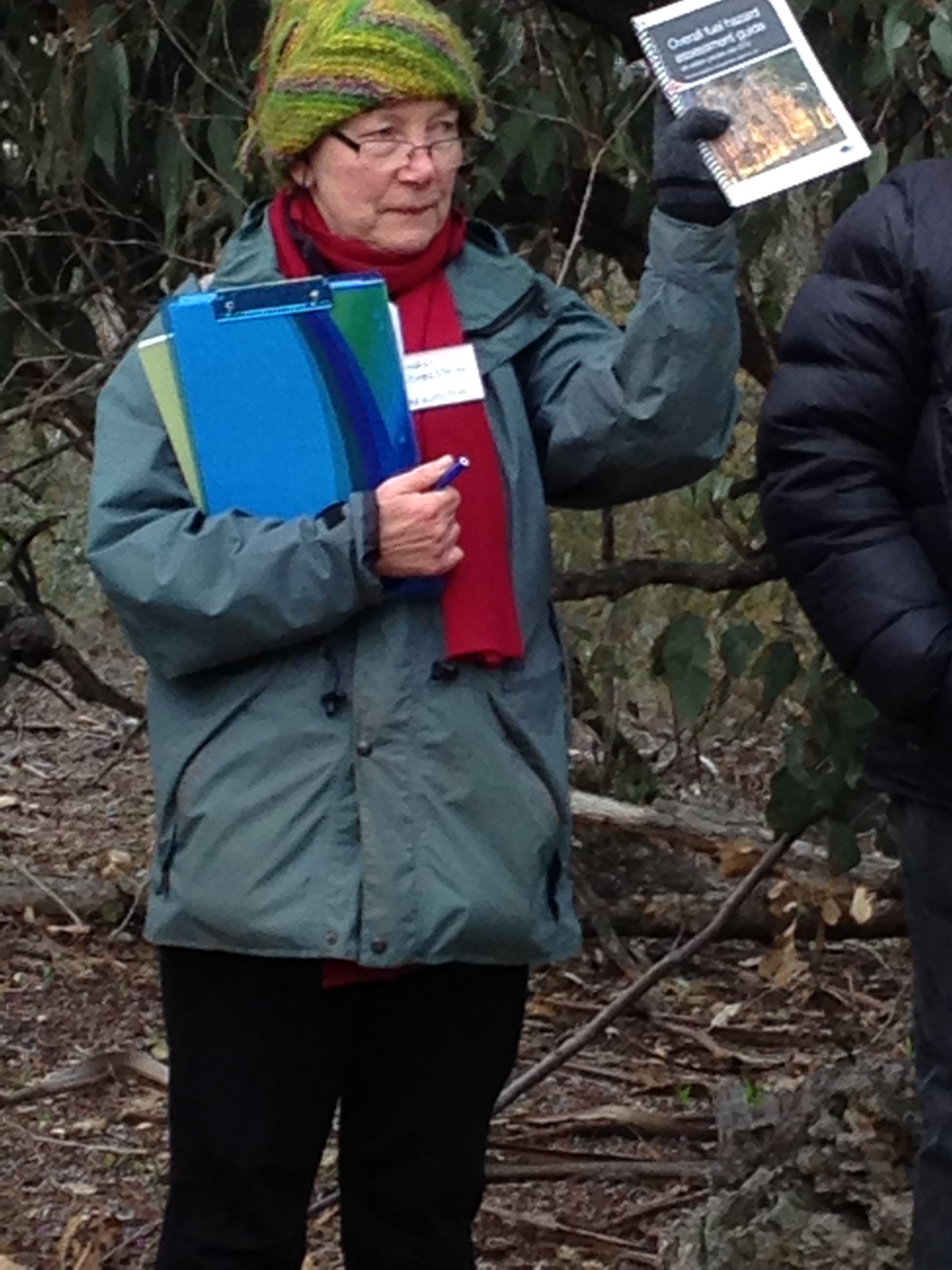Biodiversity and Fire
You can enhance biodiversity and manage fire risk at the same time by taking practical steps to understand your vegetation, minimise fire danger, and maximise biodiversity (flora and fauna). A system of thinking in ‘management zones’ can help – where the furthest from the house area is the ‘biodiversity conservation zone’, closer to the house on the is the ‘interface zone’ with modified biodiversity/ground layer, and around the house the ‘domestic zone’ with house, garden and sheds.
The following resources and tips from experts will help you to manage your property for fire, and enhance biodiversity at the same time.
Owen Goodings (Statewide Team Leader Vegetation Management, CFA)
Fire behaviour depends on the arrangement of fuel, the way it is layered – at the surface, close to the surface, elevated/mid story and at the canopy. In assessing these hazards we can learn important management concepts:
- You can identify three main zones at increasing distances from buildings. Within the ‘domestic’ zone up to twenty metres from buildings, hard surfaces such as paths predominate, and food may be produced. In the intermediate or “modified” zone, from twenty to forty metres from a building, vegetation is modified and selected for low volatility and low density. In the furthest “Bush” zone from forty metres onwards, vegetation is connected for biodiversity. These assessments also depend on slope, and whether the vegetation is grassland, woodland or forest.
- Vertical connectivity. If burning vegetation is arranged closely, lower layers will preheat and then ignite upper layers, making the fire more intense.
- Horizontal connectivity. A dense tree canopy, or dense surface fuel cover provides continuity of fuel, which will preheat and ignite vegetation downwind more readily than when there are gaps between plants. It was surprising to appreciate that although we were in what looked to us like high-risk vegetation, it was sufficiently sparse and disconnected for risk to be relatively low.
- Horizontal separation. Avoid having shrubs near the house, especially tubs near windows. Trees of low volatility e.g. Blackwoods (Acacia melanoxylon), can be used as a barrier to wind and thereby moderate fire speed, radiant heat and catch embers.
David Cheal (Fire Ecologist, Federation University)
David suggests the follows approaches:
- Establish your priorities – It is critical that you thoughtfully establish what you want your land to become or be. If you’re lucky enough to have them, parts may be designated as top priority for (say) Hooded Robins, other parts for dense shrubs for nesting sites for birds, other parts for fire risk reduction around your house, other parts for restoration of native vegetation & removal of shrubby weeds (such as Gorse), other parts for stock grazing. These priorities will determine which land management approaches are taken in each of the priority zones.
- Carefully balance your land management decisions/priorities – All decisions have upsides and down-sides. Re-establishing shrubs may greatly assist the Blue Wrens, but it works against the Magpies. Fencing to exclude Black Wallabies may greatly assist shrub regeneration, but it will also reduce habitat for the wallabies. It’s the balance, the comparison between the upsides and down-sides, that determines the best decisions.
- Recognize that no land is intact – All bushland is dramatically changed from pristine condition. Few blocks of bushland still support veteran trees, these are now very rare. Many blocks are over-stocked with competing saplings, which retards shrub regrowth and retards the development of mature trees. Rabbits are now ubiquitous, as are foxes and cats. Weeds now occur in all bushland, some of these weeds can change the structure and function of bush blocks (eg. Blackberry, Gorse, Quaking Grass). You can assist the recovery of native bushland and habitat by thoughtful intervention (eg. inplanting shrubs that have become extinct on your block, felling one in four saplings if your bushland is overstocked with regrowth, importing or favouring the development of fallen timber)
- Observe & record those observations and actions – In every trip into the bush or across your land you can learn something. Your soils may be different to your neighbours. Your site may have once supported stock yards. You may have few shrubby weeds, or dense stands of them. You may have a simplified shrub layer with lots of Cassinia but few other typical natives. You may note that a tree out the back has developed (nesting) hollows. Useful future directions come from these careful, site-specific observations. All outside experts & sources of information generalize. But you know your block best.
- Enjoy your successes – All bush management is a case of 2 steps forward and 1 step back. Those plants you carefully planted out and died the next summer, tell you that the season was not right or the nursery stock was not right or you chose the wrong species. So, you have learnt to plant earlier in autumn, or buy tube stock rather than advanced plants or choose something else that works better on your site. That’s a positive outcome, some useful learning. But also rejoice in your successes. Sum them up in your mind in the evenings. Tell your family, friends & neighbours. Write a note for the Connecting Country website to share with others. Take pleasure in the successes. Remember – If you are allowed to make mistakes, you are sure to succeed (attributed to Renan) or On the other hand, you have different fingers (attributed to ‘Larry’).
Resources
Bushfire Planning:
- Landscaping for Bushfire: Garden Design and Plant Selection (CFA 2011): CMA_landscaping_for_bushfire
- CFA online Plant Selection Key – to help choose plants for a garden in a high bushfire risk area
- Overall Fuel Hazard Guide (DSE/DEPI 2009) – Guide to assessing the hazard of bark, canopy and surface fuel: OFHG DSE
Fire in the landscape
-
Gamage, B, 2011, The Biggest Estate on Earth: How Aborigines Made Australia. Crows Nest, N.S.W: Allen & Unwin
- Pascoe, B, 2014, Dark Emu, Black Seeds: Agriculture of Accident?, Magabala Books, Australia.
- Pyne, S. J, 1991, Burning bush: a fire history of Australia, Holt, New York
- Hately, R, 2010, The Victorian bush: its ‘original and natural’ condition, Polybractea Press.
- Adams, M and Attiwill, P. 2011 Burning Issues, Sustainability and Management of Australia’s Southern Forests, Bushfire CRC, CSIRO Publishing.
Fire and ecology
- A Guide to Monitoring Habitat: Fire and Adaptive Management (DSE/DEPI 2012) – Methods for assessing the structure of habitat: Habitat-Monitoring-Guide (download as a pdf)
- Growth stages and tolerable fire intervals 2010 – Cheal, D (available from DELWP or the author)
- Ramsay, C. and Rudolph, L. 2003 Landscape and Building Design for Bushfire Areas, CSIRO Publishing.
- Tolsma, A., Cheal, D. & Geoff Brown, 2007. Ecological Burning in the Box-Ironbark Forests. Two volumes – Phase 1 – Literature Review, Phase 2 – Management Strategy. Report to the North Central CMA. Downloads available on the North Central CMA website.
- Guidelines for Ecological Thinning (Bush Tender/DEPI) – ecological thinning (download as pdf)
- Box-Ironbark Experimental Mosaic Burning Project: a collaborative project between the Department of Sustainability and Environment, Parks Victoria, and Deakin and La Trobe Universities that aims to assess the ecological outcomes of planned burns in the Heathcote-Rushworth Forest. This project will provide valuable information to guide the use of fire as a management tool in box-ironbark forests. Ask for this occasional newsletter by emailing greg.holland@deakin.edu.au
- Taylor, 2009 – report after 09 fires: Taylor2009FireSummary151
Ecology
- Natural Newstead
- How much habitat is enough?
- Museum Victoria: Bugs
- Nest Boxes
- Threatened Species and biodiversity
Workshops




